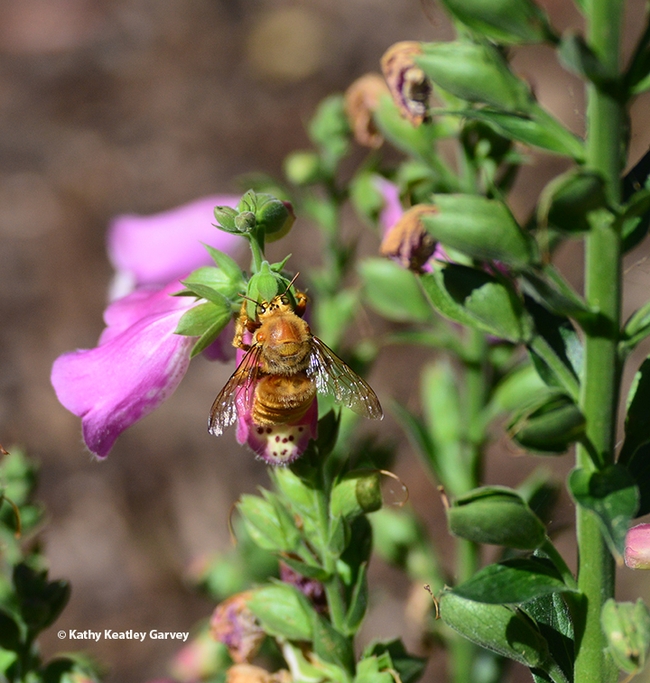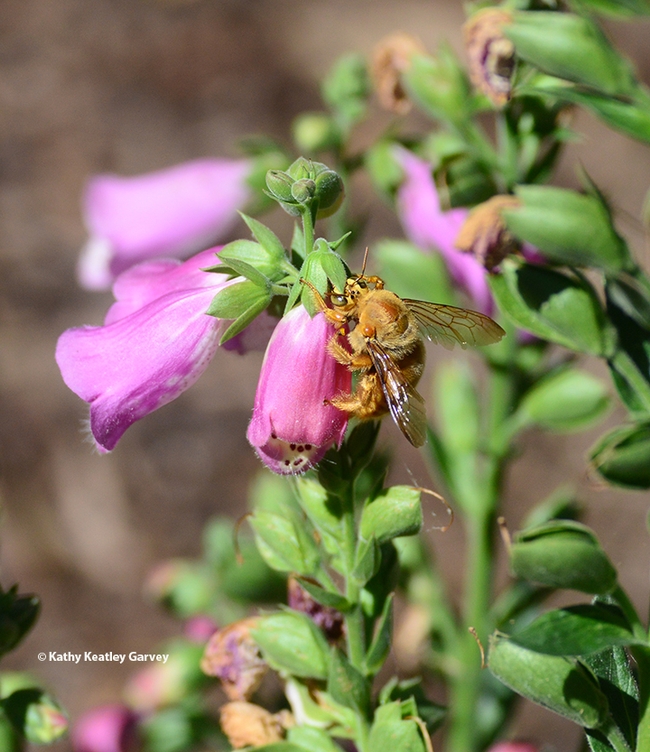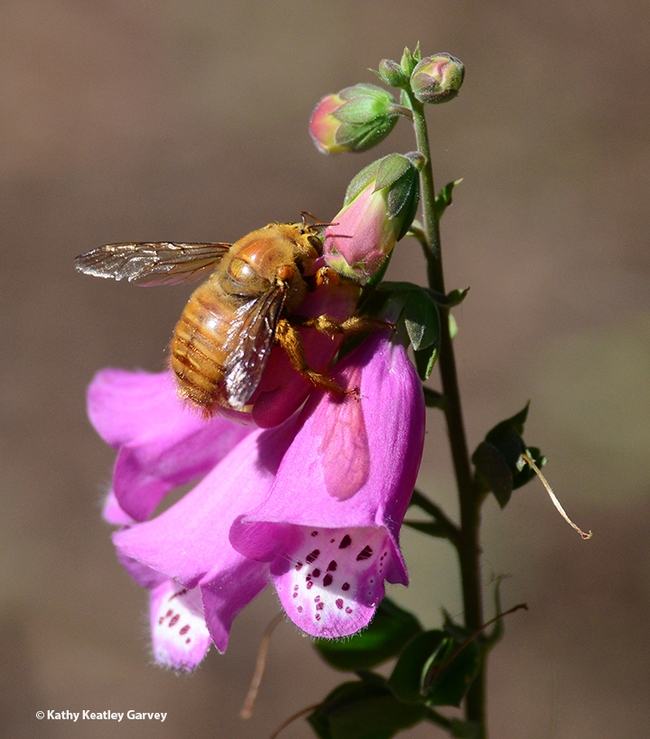There's a way for a bear to outsmart a fox.
A teddy bear bee, that is.
We just witnessed a male Valley carpenter bee, Xylocopa sonorina, aka "the teddy bear bee," buzz up to a patch of foxgloves, Digitalis purpurea.
Then he engaged in the foraging behavior known as nectar-robbing. That's when a carpenter bee or bumble bee drills a hole at the base of the corolla--or finds a hole already drilled--and "robs" the nectar, bypassing the flower's reproductive parts that lead to pollination.
Hey, I'm not going through the front door! I'm not! I'm taking the back door.
We usually see female Valley carpenter bees drilling the holes and robbing the nectar. This time, though, it was a male. The late Robbin Thorp, UC Davis distinguished emeritus professor of entomology, always referred to the males as "teddy bear bees," adding "boy bees don't sting."
This particular teddy bear lingered a bit, sipped some nectar, and then took flight.
That's how a "bear" outsmarts a fox.
By the way, sexual dimorphism is pronounced in X. sonorina. The male is a green-eyed blond, while the females are solid black.
In our garden, other plants popular for nectar robbing include the salvias, ‘Hot Lips' Sage (Salvia ‘Hot Lips'), and California fuchsia (Epilobium canum). Sometimes you'll see a honey bee following a carpenter bee or bumble bee around to gain easy access to the nectar. She "knows the drill."
Scientists have known about nectar-robbing for more than two centuries. German naturalist Christian Konrad Sprengel observed bumble bees perforating the corollas of flowers as early as 1793, according to Wikipedia. Sprengel recorded this phenomenon in his book, The Secret of Nature in the Form and Fertilization of Flowers Discovered. Charles Darwin observed nectar robbing (by bumble bees) in 1859 and published his observations in his book The Origin of Species.
Attached Images:

A male valley carpenter bee, Xylocopa sonorina, engaging in nectar robbing; he's sipping nectar through a hole in the base of a foxglove blossom. (Photo by Kathy Keatley Garvey)

Ah, sweet nectar. This male Valley carpenter bee lingers a bit to sip the sweet reward. (Photo by Kathy Keatley Garvey)

Close-up of male Valley carpenter bee, "the teddy bear beer," engaged in nectar robbing. (Photo by Kathy Keatley Garvey)